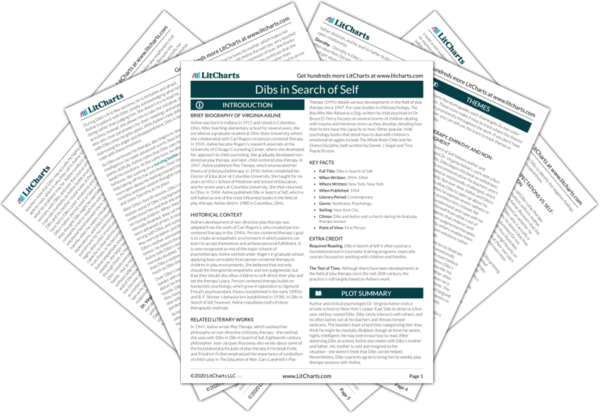The intelligence Dibs is starting to display contrasts with his lack of social skills. He appears to repeat things that have been told to him, rather than fully recognizing himself as an individual who can articulate his own needs—he has a hard time framing his wants and desires as “I” statements, for instance. Meanwhile, Axline continues to establish their mutual trust. She doesn’t question his need for help; she simply provides support for him in whatever way he needs it.
